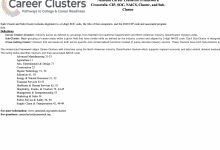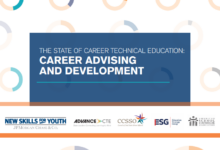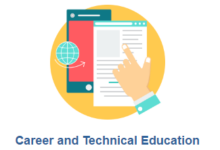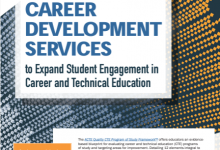South Carolina’s Education and Economic Development Act (EEDA), passed in 2005, establishes the state’s “Personal Pathways to Success” program. Under the program, every high school student — including those planning to continue their education at a postsecondary institution — is required to declare a “major” aligned with one of the nationally-recognized 16 Career ClustersⓇ. Students are expected to take career-focused courses through their elective graduation requirements, and districts are required to offer a standards-based academic curriculum organized around a Career Cluster system that provides students with individualized education choices.
What is notable about South Carolina’s approach to career development is that the EEDA articulates a framework for career advisement that spans the entire education continuum. Under the law, school districts are required to offer career exploration in elementary school. At the high school level, districts are required to provide at least one counselor for every 300 students. Individual guidance and support services are connected to the development of an individual graduation plan, which students develop in 8th grade and update annually with support from parents, teachers and school counselors. The individual graduation plan details the student’s course requirements, high school major, career aspiration and more.
Through partnerships with local Workforce Investment Boards (WIBs) and career and technology centers, the law also establishes Regional Education Centers, which provide and coordinate career planning services, workforce education and professional development for educators.
The law also helps streamline pathways from secondary to postsecondary education by requiring articulation agreements between the state’s four- and two-year institutions and secondary schools.
Policy in Action
 |
| South Carolina Department of Education data on Individualized Graduation Plan completion, 2016-17 school year |
Adoption of the EEDA policies and practices is widespread. In the 2015-16 academic year, more than 26,000 students in grades 8-12 — more than 97 percent in each grade level — completed individualized graduation plans. These numbers significantly increased the following school year. In the 2016-2017 academic year, 264,527 students in grades eight through 12-98 percent of students in grade eight and 99 percent of students in grades nine through 12- completed individualized graduation plans. Among these students, the most popular Career Clusters were Health Science; Arts, A/V Technology and Communications; and Science, Technology, Engineering and Mathematics.
The reforms adopted through Personal Pathways to Success have contributed to positive outcomes for learners. The state’s high school graduation rate increased from 73 percent in 2006 to 80 percent in 2015, and the CTE concentrator graduation rate was at 98 percent in 2017. Further, a 2011 report written by the National Research Center for Career and Technical Education indicated that EEDA had increased the amount and variety of career planning activities and changed the role of guidance counselors in the schools they observed. Additionally, “CTE teachers at a number of schools reported not only an increase in the numbers of students being directed into their courses but also more appropriate placement of students in CTE courses and programs.”
Related Links
- Bill: Full text of the Education and Economic Development Act (2005)
- Bill Summary: Executive Summary of the bill (2005)
- Report: Annual Report to Governor on EEDA Implementation (2018)
- Website: Education and Economic Development Act
- Data Dashbaord: 2016-17 Individual Graduation Plan (IGP) Conference Data Summary (2016-17)
Last Updated August 2021






